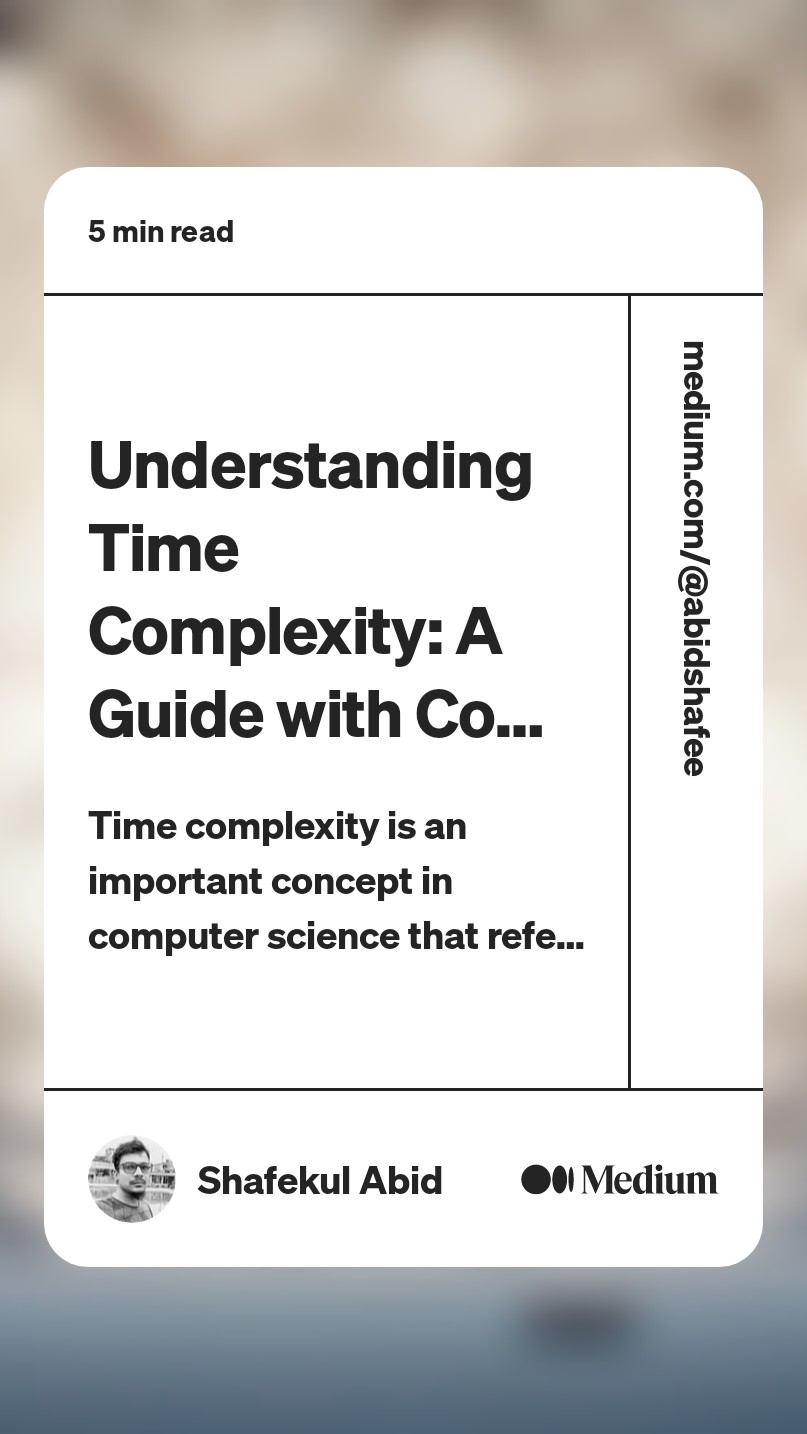Unraveling the Essence of Time Complexity and its Impact on Algorithm Efficiency
1. Introduction
- Definition of Time Complexity
- Importance in Algorithm Design
2. Understanding Big O Notation
- Definition and Purpose
- Representation as O(f(n))
3. Common Time Complexities
- O(1) - Constant Time Complexity
- Code Example: `print_first_element`
- O(n) - Linear Time Complexity
- Code Example: `find_element`
- O(n^2) - Quadratic Time Complexity
- Code Example: `print_pairs`
- O(log n) - Logarithmic Time Complexity
- Code Example: `binary_search`
4. Additional Time Complexities
- O(n log n) - Example: Quicksort
5. Choosing the Right Algorithm
- Considering Time Complexity for Efficient Solutions
6. Conclusion
- Recap of Time Complexity Importance
- Guiding Algorithm Selection
7. Appendix: Quick Reference of Time Complexities
- Summary and Comparison of Notations
Introduction
Time complexity is a fundamental concept in computer science that measures the efficiency of an algorithm and describes how its running time grows as the input size increases. It allows us to analyze and compare algorithms, enabling us to make informed decisions when designing and selecting the most efficient solutions. In this article, we will explore time complexity in depth, discussing the Big O notation and providing code examples to solidify our understanding.
Time complexity is measured in terms of the input size of the problem, and it is often expressed in big O notation.
Understanding Big O Notation:
Before diving into time complexity, let's familiarize ourselves with the Big O notation, which is commonly used to express the time complexity of an algorithm. Big O notation provides an upper bound on the growth rate of a function, representing how the algorithm's running time scales with the input size. The notation is denoted as O(f(n)), where 'f(n)' represents a function describing the growth rate.
In the context of time complexity, big O notation is used to describe the worst-case scenario for how long an algorithm will take to solve a problem as the size of the problem grows.
Continue Reading Understanding Time Complexity: A Guide with Code Examples from Shafekul Abid's Blog on Medium
Learn More likely Similar Articles here.



